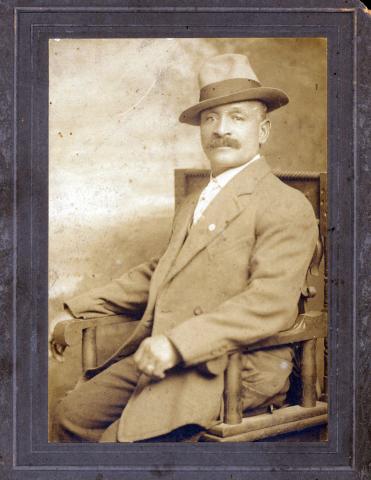
Trice, Carver, Banning, Martin
by Jillian Ocken
Most people who have spent time in Ames, Iowa, know the names of Jack Trice and George Washington Carver. Many are just now becoming familiar with James Herman Banning, with the possible renaming of the Ames municipal airport in his honor. These three African American men broke down barriers and left their mark on Ames and Iowa State College. Their portraits are being featured as part of Ames Public Library’s Black History of Ames Exhibit this month in the Library’s entryway, along with portraits of Archie and Nancy Martin.
Archie and Nancy Martin may not have the name recognition of George Washington Carver or Jack Trice, but their story intertwines with both, and their impact on Ames and its Black students was immeasurable. Born into slavery in the south, Archie and Nancy moved to Ames in 1915. In 1919, Archie and three of his sons built the house that still stands at 218 Lincoln Way.
Iowa State College (ISC) accepted students of color from its founding in 1858, but restrictive housing policies effectively forced Black students to live off-campus. By 1914, only three African American students had graduated from ISC. Archie Martin spent years advocating for equality of campus room and board, and housed many Black students in the upper floor of his own home over the years. The Martin home became a welcome gathering place the Black population of Ames. George Washington Carver was a guest there on multiple occasions, and Jack Trice enjoyed many hours visiting the Martin family and students rooming at the house.
Eventually, thanks in part to Archie’s efforts, it became easier for Black students to live on campus. Many of the Martins’ guests earned advanced degrees and went on to make their own mark on history.
If you would like to learn more about the Martins and the recognition they have received in recent years, the Ames History Museum has a website about the family at ameshistory.org/content/archie-and-nancy-martin-family.
I hope you will stop by Ames Public Library to see portraits of just a few of the many African American people who have left their mark on Ames. You can find more images in the Farwell T. Brown Photographic Archive on our website under the tag “Black Residents of Ames” or on Ames History Museum’s website.